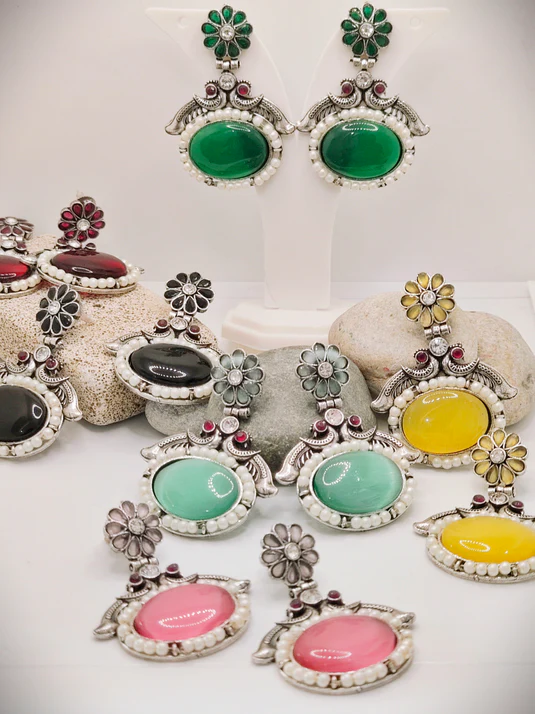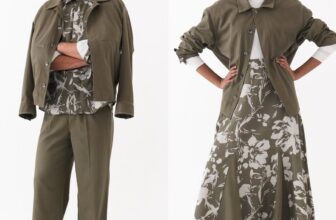
Jewellery has long served as a vehicle for expressing one’s individuality, cultural relevance, and artistic vision. The combination of necklaces and earrings is especially alluring; it draws the eye and accentuates beauty. With the increasing demand for unique and custom jewellery creations, more people are pursuing formal schooling as a means of turning their hobby into a career. This thorough manual will cover all the fundamentals of jewellery design classes, with an emphasis on making beautiful necklace set and earring sets.
Gaining an overview of jewellery design fundamentals
understanding the foundations of jewellery manufacturing is crucial before delving into the complexities of design. An introduction to a variety of materials, including as gemstones, beads, and other embellishments, as well as precious metals like gold and silver, usually occurs at the start of a jewellery design course. To create items that are both visually beautiful and long-lasting, it is imperative to comprehend the qualities of these materials.
Crucial knowledge and methods
1. Sketching and visualization: the capacity to sketch and picture your ideas is one of the first abilities you’ll learn in a jewellery design course. To bring your ideas to life on paper, this entails studying various drawing methods and perspective.
2. Cad (computer-aided design): cad software is a major component of contemporary jewellery design, enabling designers to produce accurate digital models of their creations. To design intricate objects and guarantee that your designs can be manufactured precisely, you must be proficient in cad.
3. metalsmithing: an essential component of jewellery design education is practical exposure to metals. This covers methods such as casting, forging, and soldering. Gaining proficiency with metalworking will allow you to make unique, complex pieces.
4. Gemmology: a thorough comprehension of gemstones, including their characteristics, grading systems, and setting methods, is necessary. Gemstone identification and appraisal are frequently covered in courses, and this is important for any designer who works with valuable stones.
Creating necklace set and earring sets
it takes a combination of technical expertise and creativity to create sets of matching and coherent Earrings and Necklace set. Here are some crucial things to remember:
1. harmony and balance: whether by coordinating colors, materials, or design elements, the set should have a cohesive theme. But it’s crucial to make sure that every component can be worn and stood on its own.
2. Proportion and scale: the earrings‘ dimensions and weight ought to harmonize with the necklace. For example, delicate necklaces go well with delicate earrings, but strong statement necklace set work well with more straightforward earrings.
3. Versatility: creating necklace set with a range of uses can be a big selling factor. When designing pieces, think about include detachable sections or adjusting the length to accommodate various styles and events.
Real-world knowledge and portfolio building
building a portfolio is an important part of any jewellery design education. Potential clients or employers can see your skills and inventiveness in this portfolio of work. Internships and apprenticeships offer practical experience that is invaluable since they offer real-world insight into the industry and allow you to hone your craft under the tutelage of seasoned professionals.
Examining innovations and trends
for anyone hoping to become a jewellery designer, keeping up with the most recent advancements and trends is essential. Modules on market analysis, technology developments, and current fashion trends are frequently included in jewellery design courses. Designers can push the boundaries of conventional design while still creating pieces that resonate with modern preferences when they have a solid understanding of the ebb and flow of fashion trends. For instance, the popularity of ethical and ecological jewellery has prompted creative approaches to material sourcing and production techniques. in a crowded market, incorporating these trends into your designs will help you stand out.
Networking and exposure to industry
developing a network inside the jewellery sector is essential for career advancement. Numerous courses provide seminars, workshops, and industry visits as ways for students to network with professionals in the field. These exchanges give emerging designers a forum to exhibit their work and offer insightful information about the inner workings of the jewellery industry. Observing new trends, meeting possible clients or partners, and staying motivated can all be achieved by attending jewellery exhibits and trade shows.
The jewellery design industry’s business side
jewellery creation is primarily an artistic endeavour, but it also requires a solid understanding of commercial principles. Essential business skills like marketing, branding, and entrepreneurship are frequently included in courses. Understanding how to properly price your goods, handle your money, and market your brand might mean the difference between a side project and a lucrative job. Additionally, you can safeguard your work and make sure that your original inventions remain solely yours by being aware of intellectual property regulations and the significance of trademarking your designs.
Developing a distinctive brand identity
differentiating your brand from the competition requires a strong and distinctive identity. a clearly defined brand informs your audience of your story and conveys your design ethos. Whether you want to make avant-garde, minimalist, or vintage-inspired jewellery, jewellery design classes can help you find your specialty. Creating a unified brand strategy for your business can guarantee that your work is instantly recognizable and appeals to your target market, from your logo and packaging to your internet presence.
Continual education and adjustment
because of the dynamic and ever-changing nature of the jewellery industry, lifelong learning and adaptation are essential. Maintaining your knowledge up to date and your abilities sharp can be achieved through self-study, online workshops, or advanced courses. Using cutting-edge technology like laser cutting and 3d printing can expand the possibilities for your creations. By remaining inquisitive and flexible, you can keep up with the industry and make sure that your works are still current and new.
to sum up, taking a jewellery design course offers a strong basis for turning your interest into a successful career. These courses give you the tools you need to succeed, from building a distinctive brand and staying up to date with industry trends to mastering technical skills and comprehending content. as you set out on this creative adventure, keep in mind that jewellery creation is an art form that involves more than just making stunning pieces—it also involves using your work to tell tales, evoke feelings, and leave a lasting impact.
Upon completion of a jewellery design education, numerous employment options become available. You can work as a bench jeweller, launch your own line, become a designer for a jewellery company, or even focus on gemmology or jewellery appraisal. You can also use the talents you learn in adjacent sectors like product development and fashion design.
Final thoughts
starting a jewellery design course is like taking a voyage into a creative, accurate, and beautiful universe. Whether you’re passionate about making statement necklace set sets or delicate earrings, the information and abilities you receive from a formal education can enable you to realize your creative ambitions. As you become more skilled, you’ll be able to make objects that tell a tale in addition to being beautiful, encapsulating feelings and experiences in classic styles.







